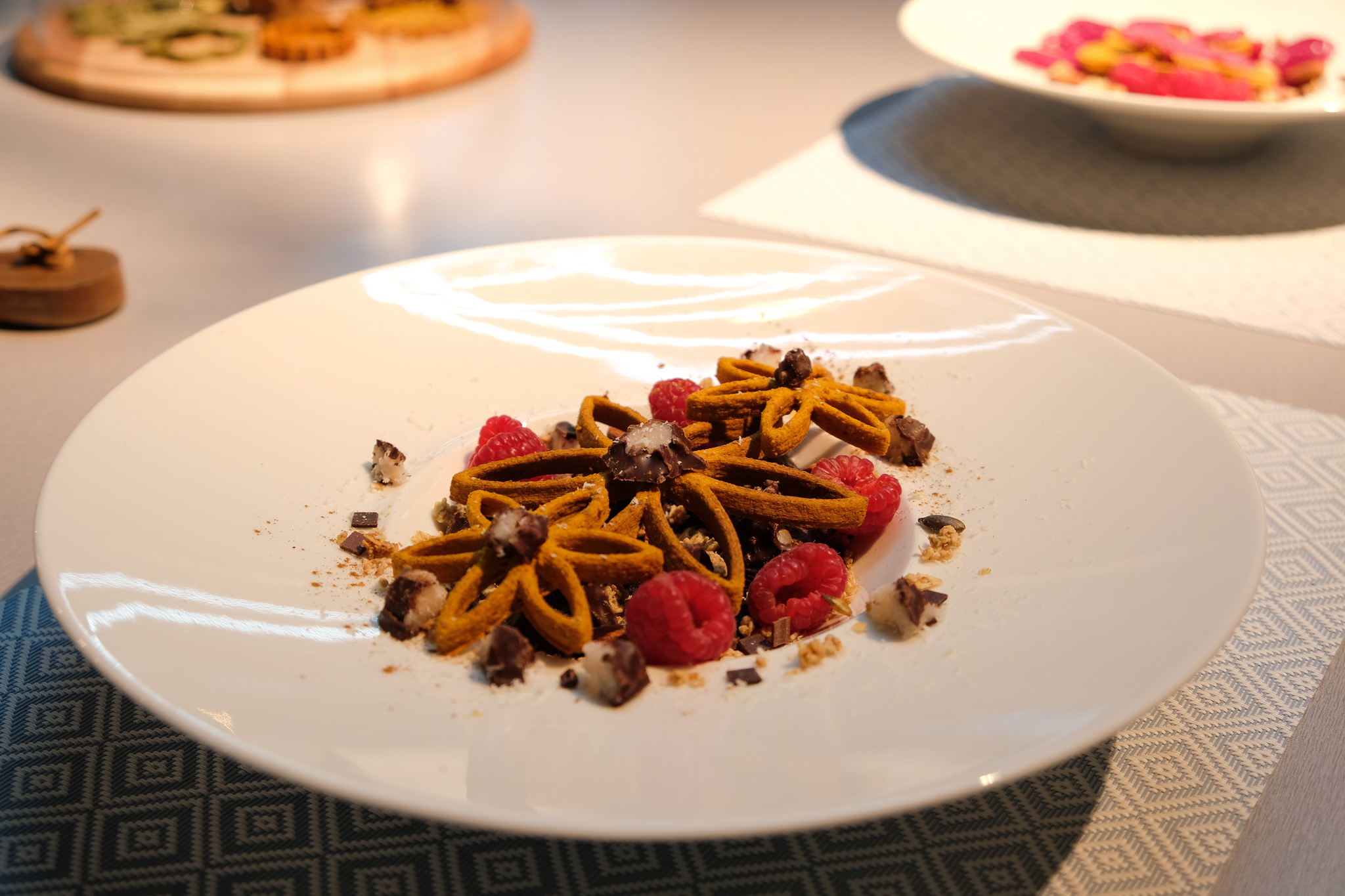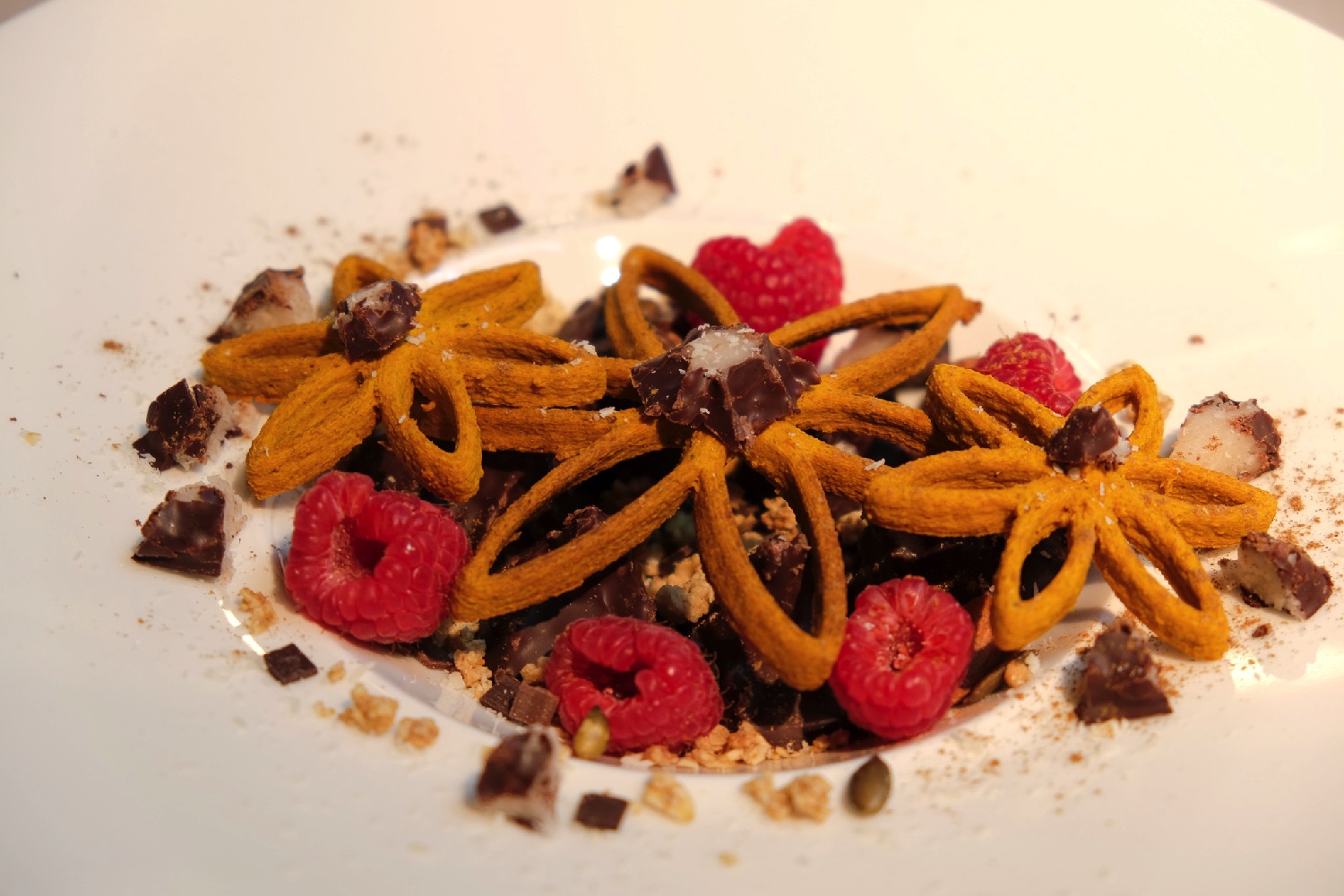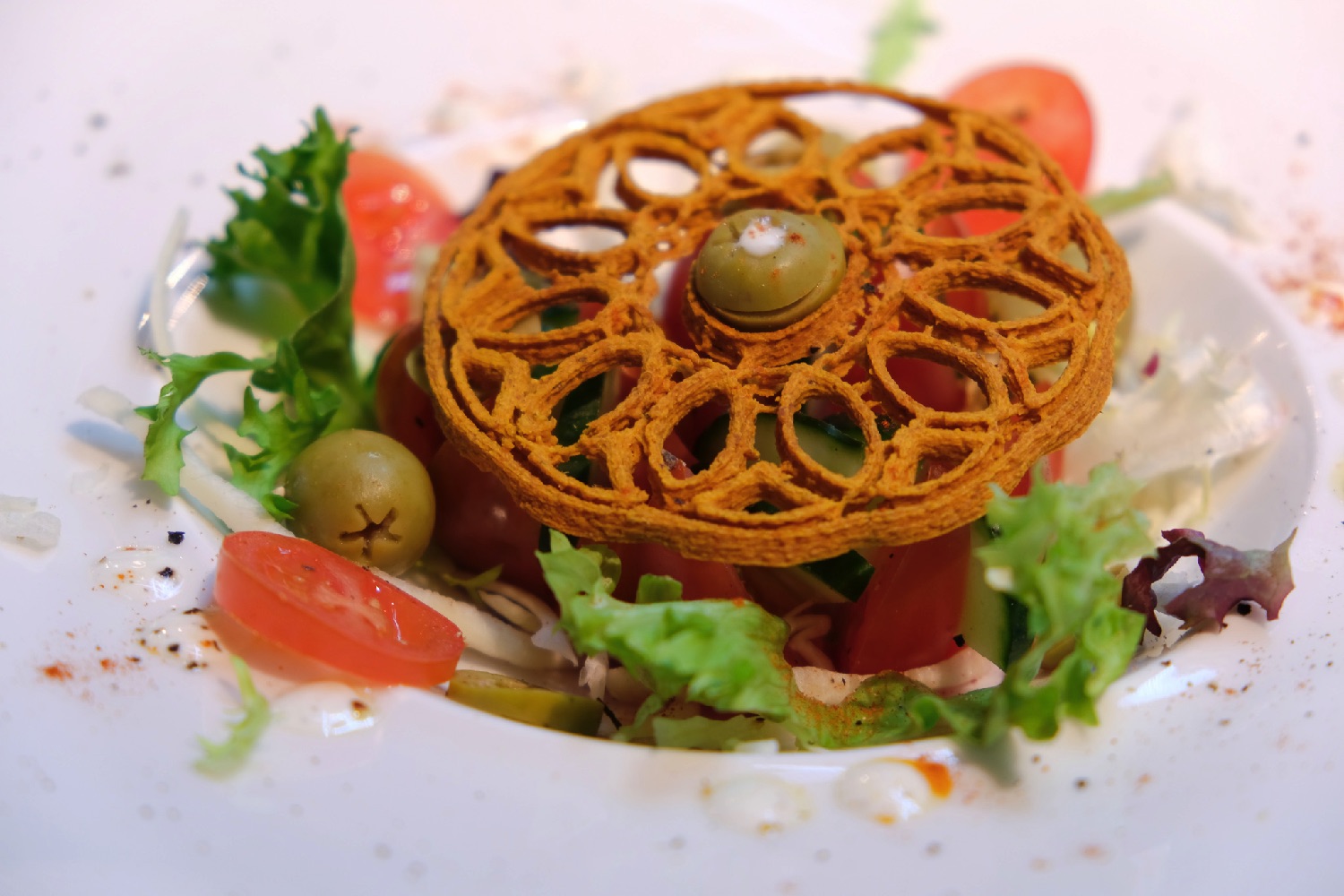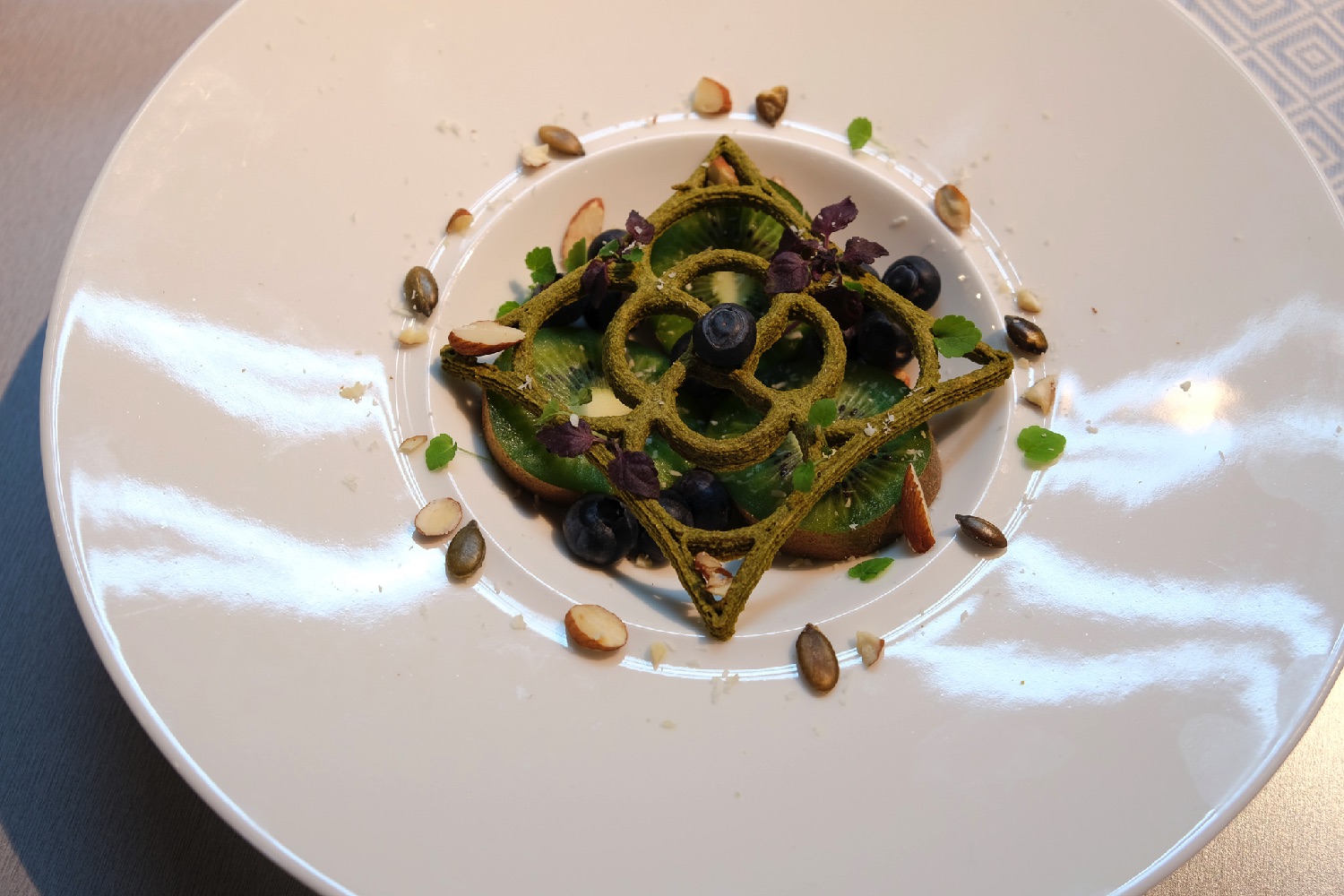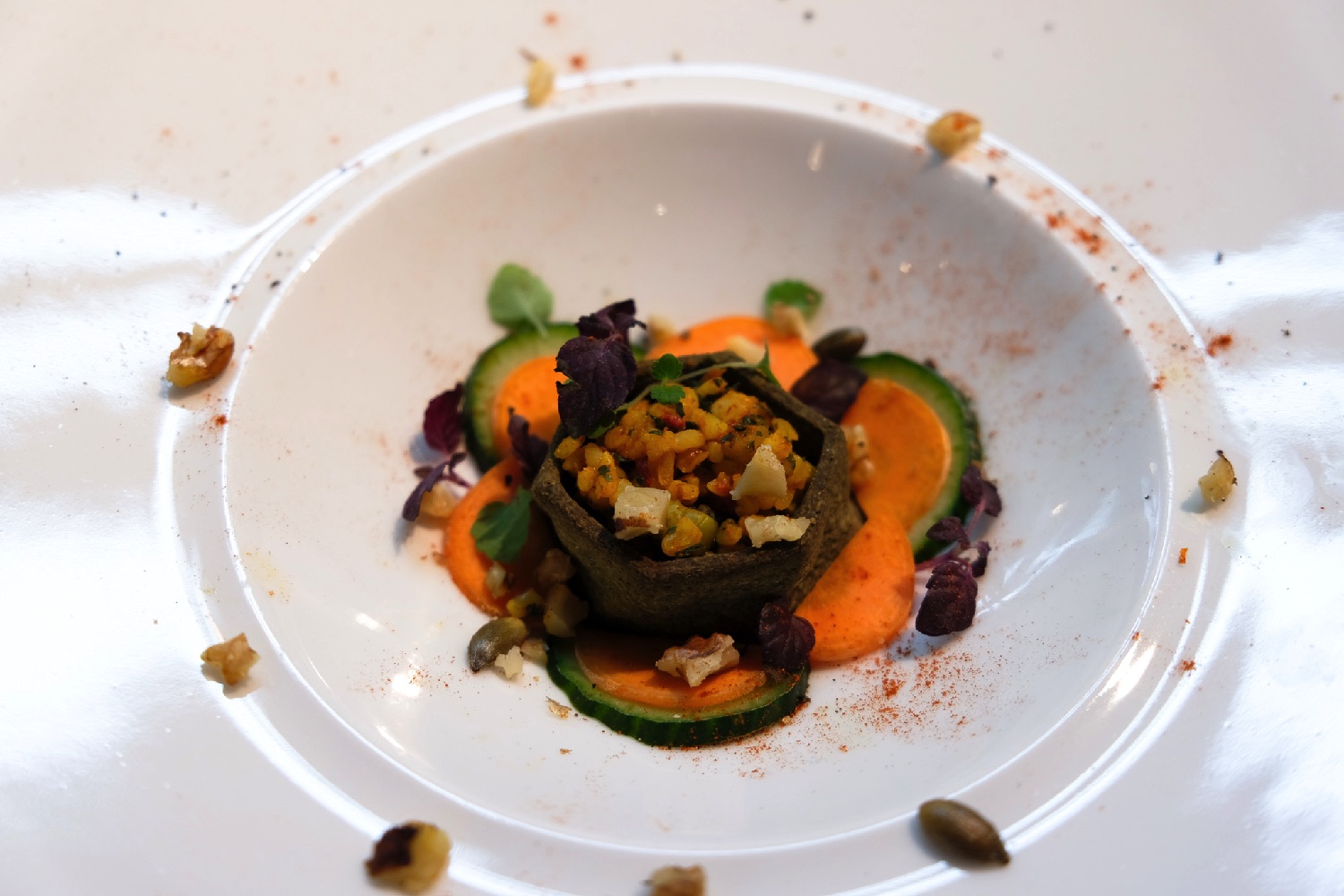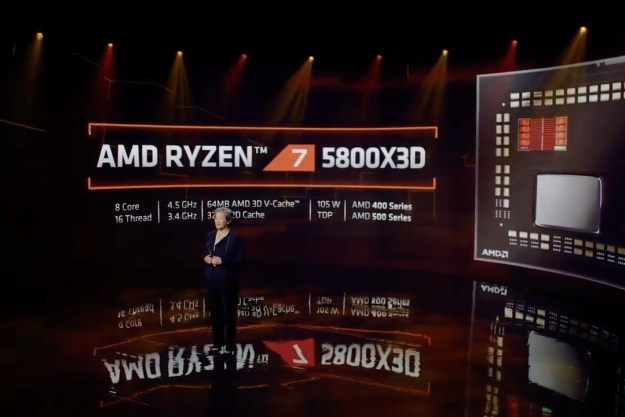The world has a food waste problem and technologists are coming up with all kinds of ways to solve it. A pair of entrepreneurs from the Netherlands, Elzelinde van Doleweerd and Vita Broeken, have an approach that’s more unusual than most: They want to give old food a new lease of life (or, at least, a new shelf life) by turning into a material which can be used for 3D printing new food.
“With Upprinting Food, we are creating an attractive food experience from food which otherwise would have been thrown away,” the co-founders told Digital Trends in an email. “We use, for example, old bread, in combination with fruits and vegetables. We create a printable puree from those residual food flows and print it in nice shapes to make it look attractive again. After printing, we bake it and dehydrate it to create a crunchy structure [with a] long shelf life. The food can be implemented very nicely in dishes, and people can eat it again.”
The 3D-printed material is made from upward of 75 percent residual food flows, in addition to select additional ingredients and herbs and spices for flavoring. Using this approach, they have created a variety of both sweet and savory food samples.
The idea for the startup came from research carried out by van Doleweerd for her bachelor’s degree at the Eindhoven University of Technology. This was an attempt to combine her study of sustainable food with new technology — in this case, 3D printing. After graduating, van Doleweerd was invited to show off the project at several exhibitions. She then teamed up with friend and business partner Broeken to launch the idea as its own startup.
“Currently we are focusing on high-end restaurants,” the pair continued, explaining their future plans. “This is a niche market, but a quite interesting start for us because the production of the food can take place in restaurants with their own residual food flows. Our first step is to upscale the printer, to make it less time consuming for restaurants to create enough 3D printed samples for their quests. In the future, we also want to focus on the retail and wholesalers, to make a larger impact and reduce more food waste.”
Editors' Recommendations
- Nvidia turns simple text prompts into game-ready 3D models
- 3D printed cheesecake? Inside the culinary quest to make a Star Trek food replicator
- AMD Ryzen 7 5800X3D beats predecessor, but AMD promised more
- AMD teases performance of its revolutionary 3D V-cache chip
- Fighting football injuries with 3D-printed, hyper-personalized pads
